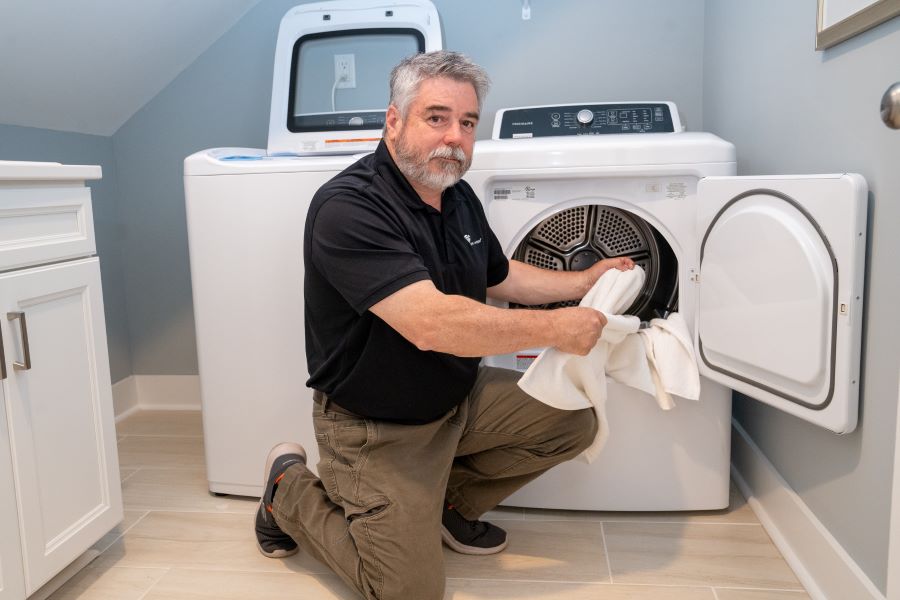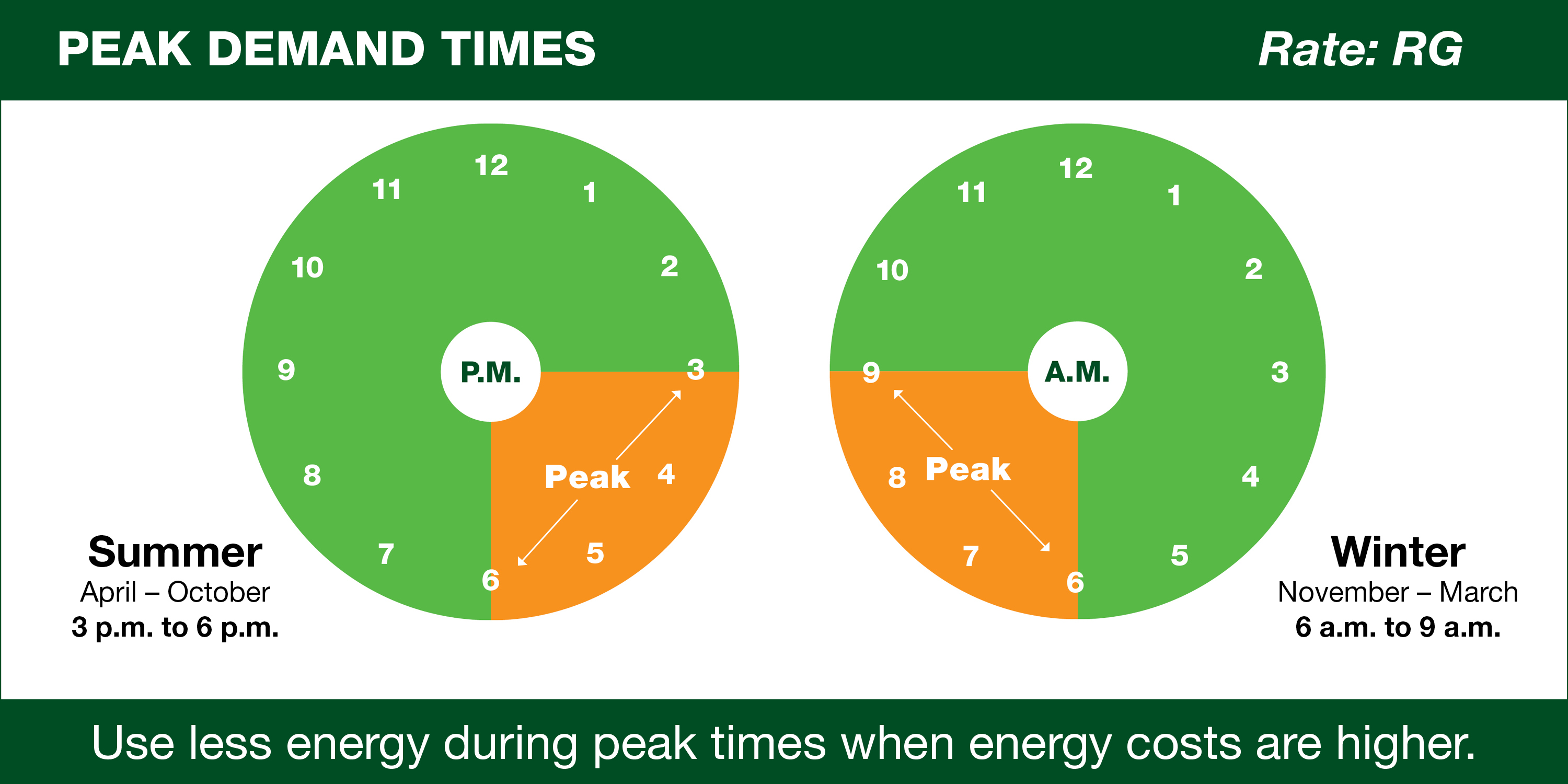Understanding On-Peak Demand and Tips to Lower Your Demand

What is Electricity Demand?
Electricity is flowing constantly to supply power to our homes and businesses. Electric utilities like Santee Cooper need to plan for covering both electric consumption and electric demand.
Electric consumption and demand are different in that consumption is determined by how much electricity you use over time, and demand is determined by the electricity you use at one time.
For example, when you use a 3-kilowatt (kW) oven over a one-hour period in the morning and then use your 3-kW washing machine for an hour in the evening, your demand is 3 kW because you’re using those appliances at different times. However, if you use the 3-kW oven and the 3-kW washing machine at the same time, your demand increases to 6 kW.
If all of Santee Cooper’s customers used their energy-intensive appliances (ovens, dishwashers, clothes washers and dryer, HVAC units, hot water heaters) at the same time, the electricity demand on Santee Cooper’s system would be extremely high.
Proposed Residential Rates Include a New Demand Charge and a Lower Energy Charge
For residential customers on the RG rate, Santee Cooper is recommending the adoption of a three-part electric rate that includes an on-peak demand charge, which will charge customers for their share of the total electricity Santee Cooper must provide during peak times (their on-peak demand).
Much of the fixed-cost recovery previously included in the energy rate will be recovered in this demand charge. The recovery of fixed costs through a demand charge allows for a direct alignment between cost-causation and cost-recovery.
This allows us to decrease the energy rate, and Santee Cooper is recommending reducing the energy charge by about 40% (based on current summer rates) and eliminating the seasonal differential in the energy charge.
It also increases customers’ ability to lower their bills by changing when they use the most electricity each day.
Lower Your Demand
Demand for electricity ebbs and flows as we go through our collective routines. When we wake up, we turn on the lights, take hot showers, cook breakfast, and adjust our thermostats. We’re usually all doing this during the same time period, which increases demand on the electric system.
While we’re at work, though, many people aren’t at home using a lot of energy so the residential demand decreases. Then, when we come home after school and work, we settle into our evening routines by watching TV, cooking dinner, doing laundry, doing the dishes, adjusting the thermostat, etc., and demand increases once again.
Being aware of peak demand times gives you the flexibility to shift your energy use. Peak demand times in the proposed rates for residential customers on the RG rate are 3 p.m. to 6 p.m. in the summer (April-October) and 6 a.m. to 9 a.m. in the winter (November-March). If you use less electricity during those timeframes, you can lower your demand and lower your demand charge.

Tips to Lower Your Demand
Here are simple things you can do to help reduce demand during peak times.
- Use a smart thermostat: These thermostats can make it easy to lower your heating and cooling usage when you’re not home.
- Stagger your use of major appliances: Do your best to use major appliances like your dishwasher, clothes washer and dryer, oven and water heater at off-peak times.
- Use a timer: This is a great way to make sure appliances like your water heater, dishwasher or pool pump only run when demand for electricity isn’t at its highest.
- Use ENERGY STAR® appliances: If you’re in the market for new appliances, Santee Cooper’s rebates can help with the cost of energy-efficient equipment.
Why Demand Matters
The more electricity people are using at the same moment, the higher the demand. It is our job at Santee Cooper to make sure we always generate enough electricity to supply all our customers, no matter how many appliances or heating/cooling systems are being used at one time. We must be able to generate enough power whenever it’s needed – regardless of the demand. An increase in demand, though, can put a strain on the power grid.
If the demand for electricity grows beyond our existing capability to supply it, we must be ready with additional generation – either a new resource, which comes with a higher price tag, or the purchase of additional electricity on the market, which also can be a higher cost item.
You can learn more about electricity demand by watching this video.
Learn more about the proposed rates and how you can get involved here.
